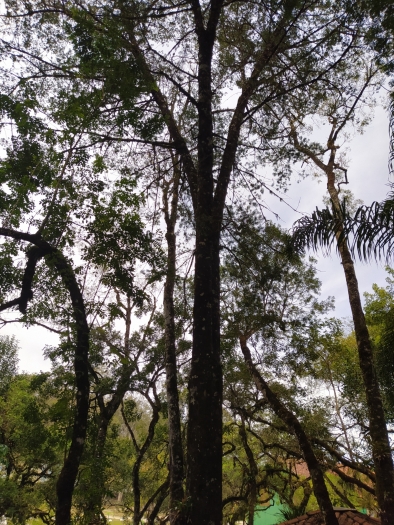Brazilian Podocarp
(Podocarpus lambertii)
Brazilian Podocarp (Podocarpus lambertii)
/
/

© Fabiele S. Beltramin
CC BY 4.0
Image By:
© Fabiele S. Beltramin
Recorded By:
Copyright:
CC BY 4.0
Copyright Notice:
Photo by: © Fabiele S. Beltramin | License Type: CC BY 4.0 | License URL: http://creativecommons.org/licenses/by/4.0/ | Uploader: fabiele | Publisher: iNaturalist |




Estimated Native Range
Summary
Podocarpus lambertii, commonly known as the Brazilian Podocarp, is an evergreen tree native to the Atlantic Forest biome, specifically in the montane regions of southern Brazil to northeastern Argentina. This species is typically found in cloud forests and high-altitude areas. It can grow to a height of 10-15 meters with a slender trunk and a pyramidal to columnar form. The leaves are lanceolate, dark green, and glossy, adding to the plant’s ornamental value. Podocarpus lambertii produces inconspicuous yellowish flowers followed by purple fruits that are attractive to birds.
The Brazilian Podocarp is valued for its elegant appearance and is used in urban landscaping, as a specimen tree, and for creating hedges or screens. It is relatively low-maintenance, requiring well-drained soil and moderate watering, with the ability to tolerate light shade to full sun conditions. While it is not known for any significant disease issues, it can be susceptible to root rot in poorly drained soils. This species is also appreciated for its wood, which is used in fine carpentry and cabinetry.CC BY-SA 4.0
The Brazilian Podocarp is valued for its elegant appearance and is used in urban landscaping, as a specimen tree, and for creating hedges or screens. It is relatively low-maintenance, requiring well-drained soil and moderate watering, with the ability to tolerate light shade to full sun conditions. While it is not known for any significant disease issues, it can be susceptible to root rot in poorly drained soils. This species is also appreciated for its wood, which is used in fine carpentry and cabinetry.CC BY-SA 4.0
Plant Description
- Plant Type: Tree
- Height: 15-50 feet
- Width: 15-25 feet
- Growth Rate: Moderate
- Flower Color: N/A
- Flowering Season: Non-Flowering
- Leaf Retention: Evergreen
Growth Requirements
- Sun: Full Sun, Part Shade
- Water: Medium
- Drainage: Medium, Fast
Common Uses
Bee Garden, Bird Garden, Deer Resistant, Low Maintenance
Natural Habitat
native to the Atlantic Forest biome, specifically in the montane regions of southern Brazil to northeastern Argentina
Other Names
Common Names: Buddhist Pine, In-matsu
Scientific Names: , Podocarpus lambertii, Nageia lambertii, Podocarpus lambertii subsp. horsmanii, Podocarpus lambertii subsp. tigreensis, Podocarpus lambertii var. horsmanii, Podocarpus lambertii var. tigreensis,
GBIF Accepted Name: